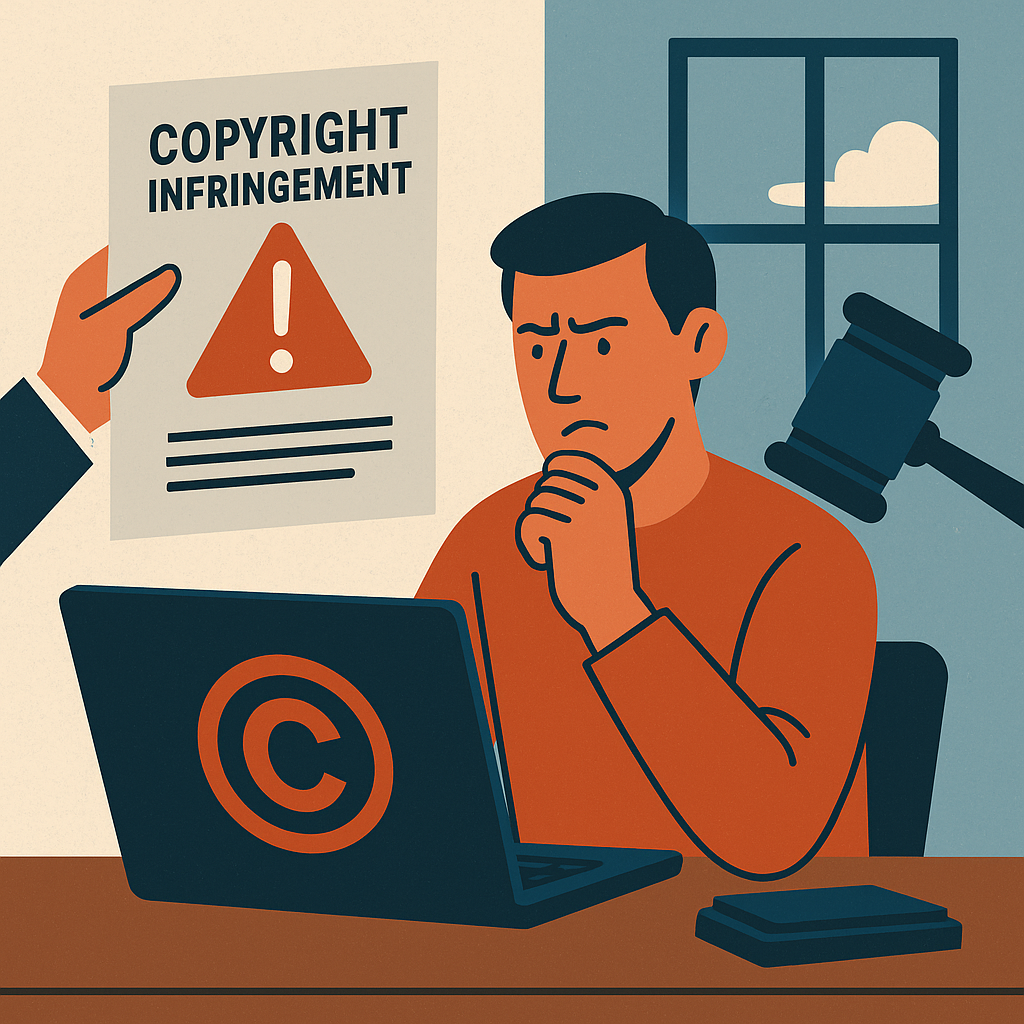Copy That, Part 8 – Infringement and Enforcement: What Happens When It Goes Wrong
 Copyright gives creators powerful rights. But those rights only matter if you can enforce them when someone crosses the line.
Copyright gives creators powerful rights. But those rights only matter if you can enforce them when someone crosses the line.
What counts as infringement?
Infringement happens when someone does any act reserved for the copyright owner—copying, distributing, adapting, performing—without permission or a valid exception.
Importantly, it doesn’t have to be deliberate. Even unintentional or “I didn’t know” copying can still be infringement.
The test isn’t whether the whole work was copied. Reproducing a “substantial part”—which can mean the heart or essence of the work—is enough.
It’s Not About Quantity
The test for infringement – that is, reproduction of a substantial part – is not about how much was copied. That is, it is not a quantitative test.
It is actually a qualitative test – it is all about the quality of what was copied. That is, how important to the whole copyright work is the part that was reproduced?
Indirect liability: authorisation
Australian law also recognises authorisation liability.
If you help or encourage infringement, or fail to take reasonable steps to prevent it (for example, running a platform that hosts pirated content without safeguards), you can be liable too.
Remedies: what can you do?
Rights holders can seek:
-
Injunctions (court orders to stop the infringement)
-
Damages (compensation for loss)
-
Account of profits (handing over profits earned from the infringement)
-
Additional damages (where the infringement is flagrant or in bad faith)
-
Delivery up or destruction of infringing copies
Practical enforcement
Litigation isn’t always the first step. Often, a cease-and-desist letter, a platform takedown request, or a negotiated licence can resolve disputes faster and cheaper.
Enforcement is as much about strategy as law.
Next up in our Copy That series:
Part 9 – International Protection: Does My Copyright Travel?